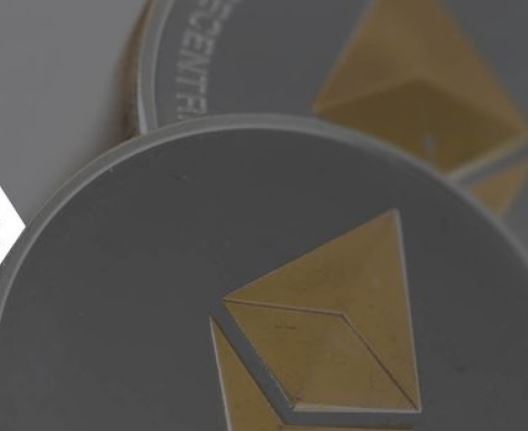The Billion Dollar Question: What Next for Bitcoin?

After its triumph last year and dramatic downfall in January many see Bitcoin as the cryptocurrency’s swansong. We have particularly tender feeling towards Bitcoin because it was (and always will be) the first one to have started the crypto revolution. So, we have decided to take a closer look at it and try to understand what will follow.
We previously touched upon the market of altcoins, and now due respect should be paid to the cryptocurrency which started it all. Since its creation in 2009, Bitcoin has been considered as the only electronic currency — thecryptocurrency. This continued up until 2016 and the growing interest in Ethereum. So, for early adopters of all things crypto, there was only Bitcoin to invest in.
Alternative cryptocurrencies, altcoins, have been just outside the interest zone of those seriously considering investing in this new type of asset. This all started to change at the very end of 2017 and the beginning of 2018, when the dominant share of Bitcoin fell from 90% to around 40%.
The bitcoin pool is not bottomless — is this a good thing?
We’re talking about a fully decentralized system here, so obviously, there’s no central bank regulation involved. Instead, bitcoins are created by the nodes of a peer-to-peer network and have a finite supply (introduced to presumably limit the effects of the inflation). At the moment, it’s claimed that over 80% of all the bitcoins have already been mined. And we cannot but think about what will happen to its value when there will be no bitcoins to mine anymore.
The idea of money supply regulation seems like a bright one. It’s becoming harder and harder to mine bitcoins and fewer and fewer new coins will be entering the ecosystem. Thus, while governments may regularly increase their fiat money supply, which encourages inflation, bitcoin encourages the exact opposite.
What motivation do miners have after all the coins are mined?
Miners are not rewarded only by freshly-mined bitcoins. They also receive all the transaction costs that were attached to the transactions they confirmed in their block while mining. Eventually, these transaction fees should become valuable enough that miners will be encouraged to keep on mining and still get paid even when there are no new coins to mine.
CommerceBlock CEO Nicholas Gregory confirms his belief in this setup: “I think bitcoin miners earn a large percentage of the money from the fees anyway, so it’s not really seen as a problem”.
Is it sufficiently technologically advanced to attract enough transactions into the system?
On January 23rd this year Stripe, a major payment processing service, stopped its support for Bitcoin. It says the transaction fees are too high and confirmation times are too slow.
“Over the past year or two, as block size limits have been reached, Bitcoin has evolved to become better-suited to being an asset rather than a means of exchange… This has led to Bitcoin becoming less useful for payments, however. Furthermore, fees have risen a great deal. For a regular Bitcoin transaction, a fee of tens of U.S. dollars is common, making Bitcoin transactions about as expensive as bank wires,” stated Tom Karlo in his announcement.
Stripe had integrated Bitcoin in 2015, making it possible for vendors to accept Bitcoin payments. Many saw this as a good sign of Bitcoin becoming a mainstream payment method in the future.
Opinions differ greatly on Bitcoin’s future market value.
So, maybe it’s not so valuable then? Opinions about its market value after January’s corrections in price do indeed differ. Benjamin Quinlan of Quinlan & Associates, an independent strategy consulting firm specializing in the financial services industry, said in his short interview with CNBC that “Bitcoin is set to plunge this year… the Bitcoin price could fall to $1,800 by the end of 2018.”
However, there are also those who believe that Bitcoin will still be the market leader through 2018. For example, Blockchain Capital partner Spencer Bogart predicted to the same source (CNBC) that because of the rising interest from institutional investors the price of Bitcoin could rise to levels of up to $50,000 this year.
Imran Wasim, a financial analyst at AMSYS Group, told NewsBTC: “A lot more money is going to come into Bitcoin, Bitcoin will go up around $30,000-$35,000 this year.”
… some even claim it failed
And not so long ago Bank of England Governor Mark Carney expressed his concern during a talk at Regent’s University in very harsh and definite terms: “It has pretty much failed thus far on … the traditional aspects of money. It is not a store of value because it is all over the map. Nobody uses it as a medium of exchange.”
Looking forward to what’s next
Obviously, Bitcoin’s price does not behave as most people predict it to. At BITRUST we think that it’s impossible to talk about Bitcoin without keeping its extremely volatile nature in mind. We know it will still be a wild ride this year and we hope that Bitcoin will definitely be around when the BITRUST P2P platform is operational for investors to start hedging their cryptocurrency trading risks!
To finance the development and launch of the BITRUST platform, a limited-supply sale of BITRUST tokens (BTFs) will be created by BTF Project Limited. The sale will start on 5th of March — see more information about the BITRUST ICO structure and the company here.
Make sure to follow us on Facebook and Medium and be the first to find out about BITRUST development news and everything else that’s important in the crypto world!
Disclaimer: The opinions expressed in this article do not represent the views of NewsBTC or any of its team members. NewsBTC is not responsible for the accuracy of any of the information supplied in Sponsored Stories/Press Releases such as this one.











Responses